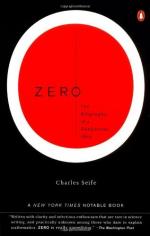|
This section contains 554 words (approx. 2 pages at 400 words per page) |

|
Chapter 5, Infinite Zeros and Infidel Mathematicians Summary and Analysis
In the modern period, Newton and Leibniz created calculus which involved dividing by zero and adding infinities. Calculus defied the previous logic of mathematics. Calculus allowed adding an infinite number of terms to get a finite result. The author explains the ideas of summing under limits. The problem with calculus is that adding infinite things can sometimes yield weird results, such as that an infinite sum of zeros can equal anything at all. But the physical world fit calculus well and Johannes Kepler used it to determine that the planets had elliptical orbits. Calculus also raises the problem of the tangent, a line that 'just kisses' a curve. For any curve, there is a tangent and tangents have important properties for physics, such as throwing a baseball. Calculating tangent lines was...
(read more from the Chapter 5, Infinite Zeros and Infidel Mathematicians Summary)
|
This section contains 554 words (approx. 2 pages at 400 words per page) |

|




